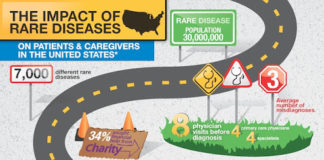 There’s been a lot of criticism of the Consumer Reports (CR) Adwatch video segment that satirized the ubiquitous Requip TV ad (see this post to Pharma Marketing Blog). Requip is a GSK drug approved in 2005 for the treatment of “Restless Leg Sydrome” (RLS).
There’s been a lot of criticism of the Consumer Reports (CR) Adwatch video segment that satirized the ubiquitous Requip TV ad (see this post to Pharma Marketing Blog). Requip is a GSK drug approved in 2005 for the treatment of “Restless Leg Sydrome” (RLS).
I have to agree with most of the critics who complained that the CR video was a sophomoric attempt at humor. However, CR reporter Jamie Hirsh did make one point that most critics have glossed over: 57% of sufferers get better with placebo compared to 73% on Requip.
NOTE: “Placebo” is a sugar pill. In many clinical trials of drugs, placebo happens to be a pretty effective alternative! But I digress…
Let me whip out my trusty Microsoft desktop calculator and do some math so that you don’t have to.
Let’s say that 3% of the US adult population suffers from RLS (the Requip website claims 10%, but I am using the 3% number because that’s the number Jamie Hirsh cited and none of her critics — including pro-DTC Bob Ehrlich of DTC Perspectives magazine — quibbled with that estimate). This equates to about 7 million US adults.
Let’s say 15% of these RLS sufferers are taking Requip. I got this figure from a GSK presentation made to Merrill Lynch analysts (here). That’s 1 million people on Requip, give or take a few thousand.
I found an estimate of $500 million in US Requip sales for 2006. This comes to $500 per person treated per year. I assume all of this goes to the RLS sufferers and most of it is paid for by 3rd parties (insurers, gov’t, employers), which eventually adds to all our healthcare financial burdens from taxes, higher co-pays, etc.
But what about the effectiveness of Requip vs. placebo?
If 57% (570,000) of the 1 million RLS sufferers would find relief with sugar pills vs. 73% (730,000) with Requip, that means only 160,000 people (730,000 – 570,000) actually benefited from Requip.
That’s not a small number. But for our healthcare system to spend $500 million to benefit 160,000 people ($3125 per person per year) is ridiculous!
NOTE: You can also say that $285 million was wasted treating the 570,000 people who would have done as well taking a sugar pill.
BTW, how many of those 1 million people actually suffer from RLS versus how many are convinced they have it and, in turn, convinced their doctors to prescribe Requip?
If we were talking about a cancer treatment, it might be callous to do this kind of monetary analysis. You can’t put a number on a human life — although insurance companies do it all the time. I am sure, therefore, that someone besides me has done this analysis for Requip/RLS and other drug/syndrome pairings. if so, I’d like to know about it.









![6 Digital Tools at the Center of Healthcare Digitalization [INFOGRAPHIC]](http://ec2-54-175-84-28.compute-1.amazonaws.com/pharma-mkting.com/wp-content/uploads/2021/04/6DigitalTools_600px-100x70.jpg)




